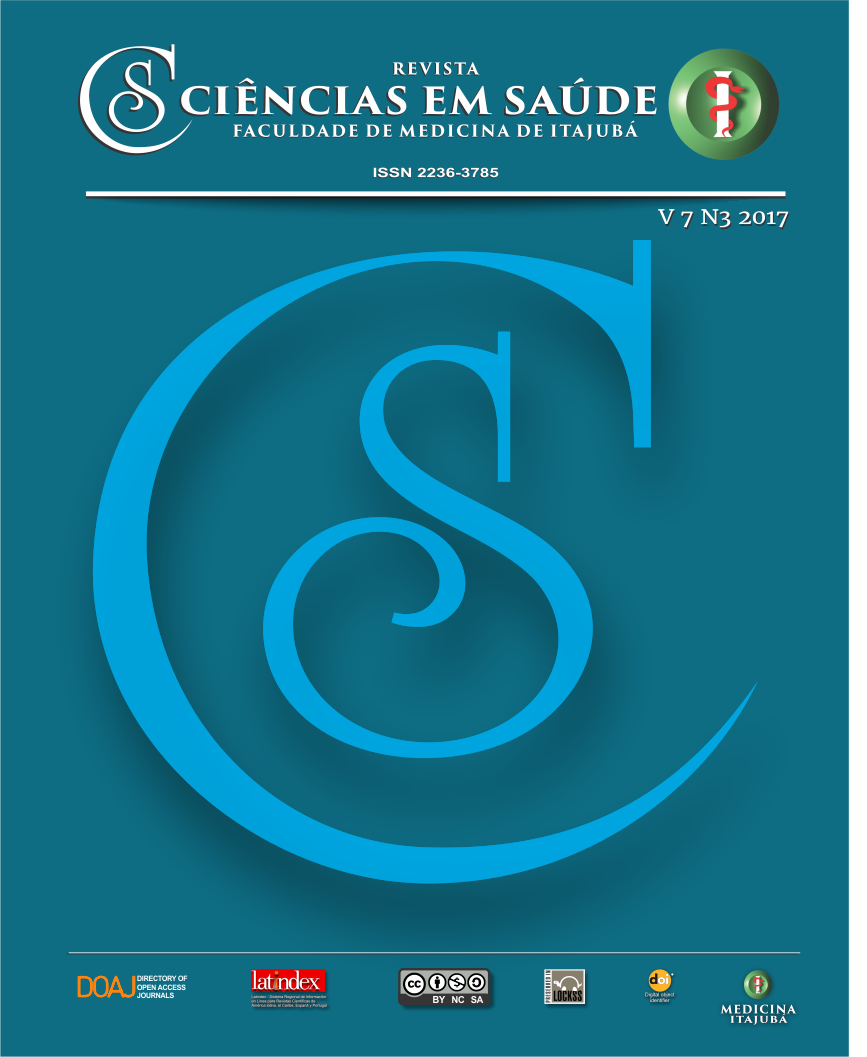Perfil clínico-epidemiológico dos pacientes em pós-operatório de artroplastia em um hospital do sul de Minas Gerais / Epidemiological clinical profile of patients in arthroplasty postoperative period in a hospital south of Minas Gerais
Main Article Content
Abstract
Introdução: Conhecer a epidemiologia das artroplastias contribui para uma melhor assistência ao paciente, proporcionando medidas corretivas e preventivas das possíveis complicações. Objetivos: Traçar o perfil clínico-epidemiológico dos pacientes em pós-operatório (PO) de artroplastia em um Hospital do Sul de Minas Gerais. Métodos: Foi realizado um estudo observacional, retrospectivo e transversal a partir da análise de prontuários e exames complementares de pacientes submetidos à artroplastia de quadril e joelho no Hospital Escola da Faculdade de Medicina de Itajubá (HE/FMIt). Resultados: Houve prevalência do gênero feminino; a idade média foi de 69,1 anos; 93,6% eram brancos; 49,4% eram casados; 92,0% eram católicos. Em relação à artroplastia de quadril e joelho, respectivamente, 48,4% tiveram fratura de fêmur e 73,3% artrose; 83,4% foram submetidos à artroplastia total de quadril e 100,0% à artroplastia total de joelho; 82,2% e 100,0% utilizaram prótese cimentada; 91,1% internados de 5 a 10 dias e 86,7% internados de 1 a 5 dias; 42,7% negaram comorbidades e 66,7% tinham hipertensão arterial; 46,5% e 60,0% relataram dor, 5,1% apresentaram luxação e 80,0% sem complicações. Destaca-se que 100,0% dos pacientes não foram encaminhados à fisioterapia. Conclusão: Conclui-se que a organização e sistematização de dados são fundamentais para a promoção da segurança do paciente, prevenindo suas complicações e aumentando a sua qualidade de vida.
Palavras-Chave: Perfil epidemiológico; Ortopedia; Artroplastia de quadril; Artroplastia de joelho
Introduction: To know the epidemiology of arthroplasties is a way to contribute to better patient care, by providing corrective and preventive measures of possible complications. Aims: To describe the clinical-epidemiological profile of patients in the postoperative period (PO) of arthroplasty in a Hospital in the South of Minas Gerais State. Methods: An observational, retrospective and cross-sectional study was carried out and it was based on the analysis of charts and complementary exams of patients who underwent hip and knee arthroplasty at the School Hospital of the Medical School of Itajubá (HE/FMIt). Results: There was a prevalence of female gender; mean age was 69.1 years of age; 93.6% of the patients were Caucasian; 49.4% were married; 92.0% were catholic. Concerning hip and knee arthroplasty, 48.4% had a femur fracture and 73.3% had arthrosis; 83.4% underwent total hip arthroplasty and 100.0% underwent total knee arthroplasty; 82.2% and 100.0% used cemented prosthesis; 91.1% were hospitalized for 5 to 10 days and 86.7% hospitalized for 1 to 5 days; 42.7% denied comorbidities and 66.7% had arterial hypertension; 46.5% and 60.0% reported pain; 59.0% presented pain dislocation and 80.0% had no complications. It is highlighted that 100.0% of patients were not referred to physical therapy. Conclusion: It is concluded that the organization and systematization of data are fundamental for the promotion of patient safety, preventing complications and increasing their quality of life.
Keywords: Epidemiological profile; Orthopedics; Hip arthroplasty; Knee arthroplasty
Article Details
Authors maintain copyright and grant the HSJ the right to first publication. From 2024, the publications wiil be licensed under Attribution 4.0 International 
 , allowing their sharing, recognizing the authorship and initial publication in this journal.
, allowing their sharing, recognizing the authorship and initial publication in this journal.
Authors are authorized to assume additional contracts separately for the non-exclusive distribution of the version of the work published in this journal (e.g., publishing in an institutional repository or as a book chapter), with acknowledgment of authorship and initial publication in this journal.
Authors are encouraged to publish and distribute their work online (e.g., in institutional repositories or on their personal page) at any point after the editorial process.
Also, the AUTHOR is informed and consents that the HSJ can incorporate his article into existing or future scientific databases and indexers, under the conditions defined by the latter at all times, which will involve, at least, the possibility that the holders of these databases can perform the following actions on the article.
